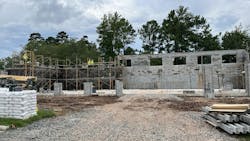For many independent tire dealers, expanding beyond one location represents a milestone of success. It’s proof that your business model works, your community supports your brand and your team is capable of delivering results. But what about pushing beyond two, three and more locations? That’s often where skill sets are challenged, growth slows, chaos creeps in and stress levels spike. Why? Because what got you to two or three stores won't get you to five or six — or even four.
The biggest mistake owners make when growing their store count is underestimating the importance of systems, processes and structure. At the one to three store stage, many businesses are held together by a handful of reliable team members who simply “get it done.” But that becomes a major issue when you add more locations.
Once a fourth or fifth store enters the picture, cracks start to show. You can’t be everywhere. Your reliable, “get-it-done” team begins to hit bandwidth limits. Decisions that used to be made instinctively now need documented criteria. Training that once happened by osmosis now requires formalization. Without clear systems, replicable processes and skilled coaches, the culture and performance you built in your first three stores won’t easily translate into new ones.
To grow effectively beyond three stores, you need to shift from an operator mindset to a builder mindset. That means stepping back and developing scalable systems. You need clear KPIs, role accountability and communication/accountability cadences that work without your daily involvement.
This can be uncomfortable for many owners because it feels like slowing down when you want to speed up. Here’s the hard truth: most tire store owners are entrepreneurs, not systems people. They’re driven by vision, instinct and grit. They thrive on solving problems in real time. But systems building is a different muscle. It requires slowing down, documenting, delegating and refining. It’s process-oriented work that often feels tedious to an entrepreneur’s brain. It’s change management and the ability to manage change is a unique skillset.
As a result, many owners delay systemization. They keep pushing forward, creating a litany of scoreboards and random documentation and hiring more “doers,” without creating the infrastructure that supports long-term scale. Eventually, the weight of the business becomes too much to carry and growth stalls. Worse, stores underperform and your brand equity suffers.
One solution is to bring in the right kind of help. Whether it’s an executive coach, a fractional chief operating officer, an operations consultant or an internal systems-minded leader, successful growth often depends on pairing entrepreneurial vision with operational discipline. You don’t need to become a systems expert. You just need to respect the need for systems and empower someone to build and own them.
Another major mistake owners make in this growth phase is designing roles around existing team members, instead of around what their business truly needs. A loyal manager who’s been with you since store one might get promoted to district manager — not because he or she has the right skillset, but because this individual has been with you since the beginning of your dealership. Or you might carve out a new marketing role for someone with a knack for social media, rather than hiring or training someone with experience in driving multi-store lead generation.
This kind of people-first role design is well-intentioned, but often destructive. Instead of building a business that scales, you end up building a business that’s overly dependent on specific individuals. And when those individuals hit their ceiling — or leave — you’re left with a gap that’s difficult to fill. Or worse yet, you allow your growth to stall because you’ve relied far too heavily on too few people who have the wrong skillsets.
A better approach is to define the roles your growing business truly needs, based on function, accountability and outcomes, without naming names. Then identify the skills and attributes required to succeed in those roles. Only then should you assess whether existing team members are a fit or if you need to develop or hire to fill the gap. This discipline ensures your organizational structure scales with your store count and isn’t held hostage by personalities or tenure.
If you’re operating one to three or more stores and are eyeing expansion, remember that growth doesn’t start with adding locations. It starts with building the foundation to support those locations. That means systemizing what works, defining what success looks like and building a team structure based on roles — not relationships.
Growing past three stores is where real business maturity begins. It requires shifting from being the hub of all activity to becoming the architect of a replicable business model. It's not easy, but it's the difference between owning a job and building an enterprise.
It’s never too late, even though it’s much more difficult to do the further down the line you are. Put in the work now to build the systems, roles and processes your business needs. That’s how you ensure your next store, and every one after, is as successful as your first.
About the Author

Randy O'Connor
Tire and auto industry veteran Randy O’Connor is the Owner/Principal of D2D Development Group (Dealer to Dealer Development Group.) He can be reached at [email protected]. For more information, please visit www.d2ddevelopmentgroup.com.
